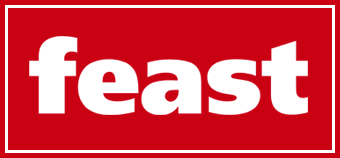As a nonprofit or charity, fundraising is one of your most important operations, and donor retention plays a vital role in this regard. It helps establish your organisation’s long-term financial stability. Recent trends in the nonprofit sector suggest there’s been an upward climb in donor acquisition costs, with donor retention rates on the decline.
If your nonprofit is facing a similar challenge, then a nonprofit CRM is the right solution for you. Over the years, it’s gone from being a non-essential to a necessity with good reason. This is because its ability to streamline fundraising operations and enhance stakeholder relationships has had a positive impact on donor retention rates.
From being a centralised platform for donor and volunteer data to automation and useful analytics, a nonprofit CRM can help your nonprofit improve its operational efficiency. When combined with managed IT services from experts like Redpalm Technology Services, your nonprofit benefits from a streamlined process.
In this article, we explore how you can boost your organisation’s donor retention rates with the right nonprofit CRM.
The Benefits of a Centralised Hub
If you find yourself dealing with fragmented pieces of information and a hundred spreadsheets in the era of fully digitalised processes and paperless storage, it’s time for an upgrade. Nonprofit CRMs often act as a centralised hub for crucial donor data, providing you with a detailed and comprehensive data set.
This can give you insightful and actionable information ranging from giving history, communication preferences and event attendance to seasonal giving trends. As a result, you can create more personalised communication and tailor outreach goals with greater efficiency.
Improved Donor Segmentation
Looking to create targeted campaigns that speak directly to your donor base without the fuss? The right nonprofit CRM can help you do just that and help you avoid the pitfalls of a generalised fundraising pitch. Donors want to feel valued and appreciated for the support they’re giving you, so a personalised fundraising appeal can work wonders.
A CRM can help you group and segment donors, by shared features like giving amounts, donation frequency and engagement history. This insight can help you craft targeted campaign messages that resonate with them. Doing this can boost response rates, which directly translates to improved donor retention rates.
The Power of Automation and Fundraising Tasks
Are routine administrative tasks pulling the life out of you and leaving you with little time for more important tasks like donor engagement? A CRM system can be the perfect solution as it helps you automate dull and repetitive tasks for you and your team.
CRMs can handle everything from sending personalised notes to your donors after a donation is made to scheduling important reminders like birthdays or pledge reminders. They can also automatically update donor records when donations are made, so that you don’t have to manually fill in these details. This allows for error-free records, minimises administrative overhead costs and ensures your donor is valued.
Data-driven Insights
Donor data can provide a wealth of information and useful insights, but this needs to be deduced correctly in order to be put to good use. CRMs offer you this and more by providing you with real-time insights on key metrics. You’ll be able to view campaign conversion rates, donor retention rates and average donor contributions.
This data is often collated into comprehensive reports that can help you identify trends and the reasons why certain campaigns were more successful than others. It can inform your future campaign strategies and help you with resource optimisation. These data-driven insights can empower your fundraising programme in positive ways while demonstrating accountability to your board.
Reviving Lapsed Donors
Lapsed donors are often an ignored yet powerful way of turning your former supporters into long-term advocates for your campaign. So how do you go about this? A nonprofit CRM can help you by providing you with a timeline of activities and the response of a lapsed donor. The advantage? It allows you to identify the exact time when they stopped engaging with your campaign.
This information can help you curate re-engagement strategies for a dedicated campaign tailored for lapsed donors. You could start by acknowledging their support by using the CRM to craft personalised messages and present a new campaign or mission goal that aligns with their past interests. This kind of donor retention effort is not only cost-effective but also helps you restore valuable donor support.
Summing Up
The modern fundraising landscape is driven by a range of economic and social difficulties which need a strategic approach to donor management. Data-driven fundraising insights can help you create highly relevant and targeted campaigns that speak to your donors. Communicating your campaign message to the right person at the right time can make a world of difference in boosting donor retention.
In 2025, donor demographics have also changed considerably, with most Gen-Z and millennial donor groups having a preference for personalised and transparent communication. A nonprofit CRM can help you personalise at scale while allowing you to communicate more authentically. It can also help you showcase the impact of donor contributions to your project, helping you weave compelling stories and build donor trust.


